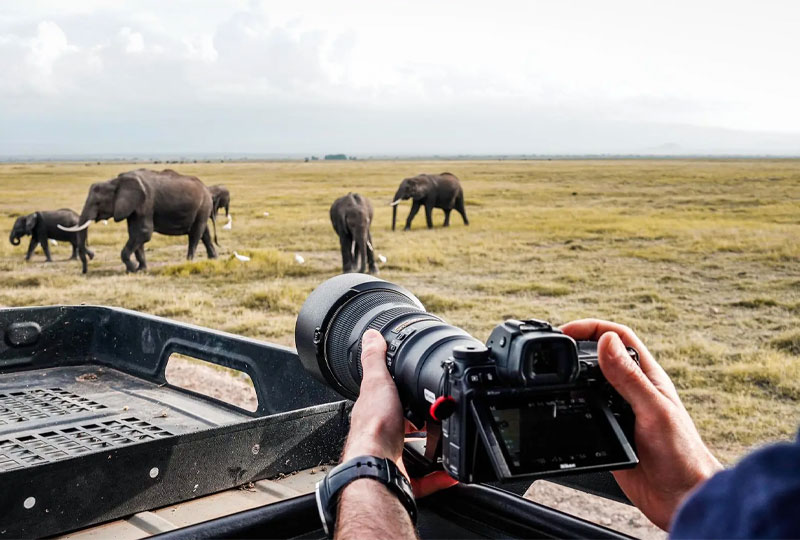Safari Photography Tips: Capture Stunning Wildlife Shots
Master the Art of Safari Photography with Chacal Expeditions
 Embarking on a safari in Kenya offers the chance to witness some of the world’s most majestic creatures in their natural habitat. Whether you’re capturing a lion on the prowl, elephants at a waterhole, or a giraffe against an African sunset, safari photography is an experience like no other. At Chacal Expeditions, we don’t just take you to see wildlife — we help you capture it beautifully.
Embarking on a safari in Kenya offers the chance to witness some of the world’s most majestic creatures in their natural habitat. Whether you’re capturing a lion on the prowl, elephants at a waterhole, or a giraffe against an African sunset, safari photography is an experience like no other. At Chacal Expeditions, we don’t just take you to see wildlife — we help you capture it beautifully.
Here are our top safari photography tips to help you take home unforgettable wildlife shots during your Kenya safari.
1. Use the Right Gear
While a DSLR or mirrorless camera with interchangeable lenses offers the most control and quality, many smartphones today also have impressive capabilities. However, for wildlife photography, a telephoto lens (200–600mm) is highly recommended to capture animals from a safe distance.
Tip: Bring extra batteries, memory cards, and a bean bag or monopod for camera stability in safari vehicles.
2. Light is Everything
The best light for wildlife photography happens during the “golden hours” — early morning and late afternoon. This soft light enhances colors and reduces harsh shadows, making your images pop.
Tip: Schedule game drives with these golden hours in mind to maximize your photography opportunities.
3. Focus on the Eyes
In wildlife photography, the eyes are the most expressive part of the animal. Always try to focus on them for a sharp, engaging portrait that tells a story.
Tip: Use continuous autofocus (AI-Servo/AF-C) mode to track moving animals and keep their eyes sharp.
4. Compose Creatively
Go beyond centered shots — use the rule of thirds, play with negative space, and include elements like the environment, dust, or other animals to tell a fuller story. Zoom out occasionally to capture wildlife in their natural surroundings.
Tip: Vary your shots — take wide angles for landscapes and close-ups for detail.
5. Be Patient and Observant
Wildlife moments don’t follow a schedule. Be patient and keep your camera ready. Some of the best shots come from waiting quietly and observing animal behavior.
Tip: Learn basic animal behavior signals — for example, lions stretch before standing, and elephants lift their trunks when alert.
6. Use a Private Vehicle for Flexibility
Photographers benefit greatly from the flexibility of a private safari vehicle, which allows you to stay longer in one location, position for better lighting, and avoid crowds. Chacal Expeditions offers private and customized photo safaris for all levels of experience.
7. Travel with a Knowledgeable Guide
A good safari guide understands animal behavior, light angles, and positioning. Our expert guides at Chacal Expeditions are not only wildlife professionals but also trained to support photography-focused safaris.
Book Your Photography Safari with Chacal Expeditions
Whether you’re a hobbyist or a professional photographer, Chacal Expeditions will help you design a custom safari experience that ensures the best conditions for capturing Kenya’s incredible wildlife.
